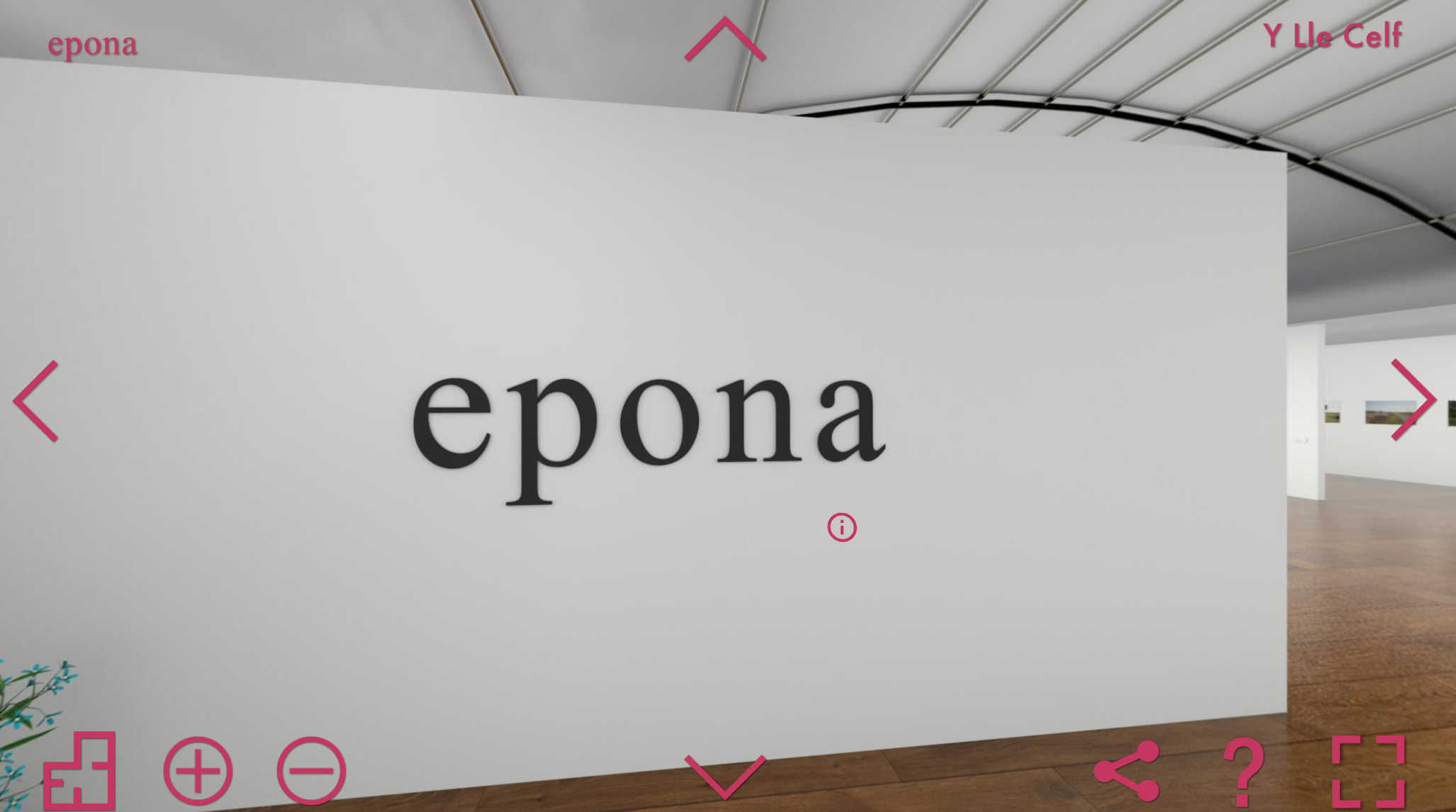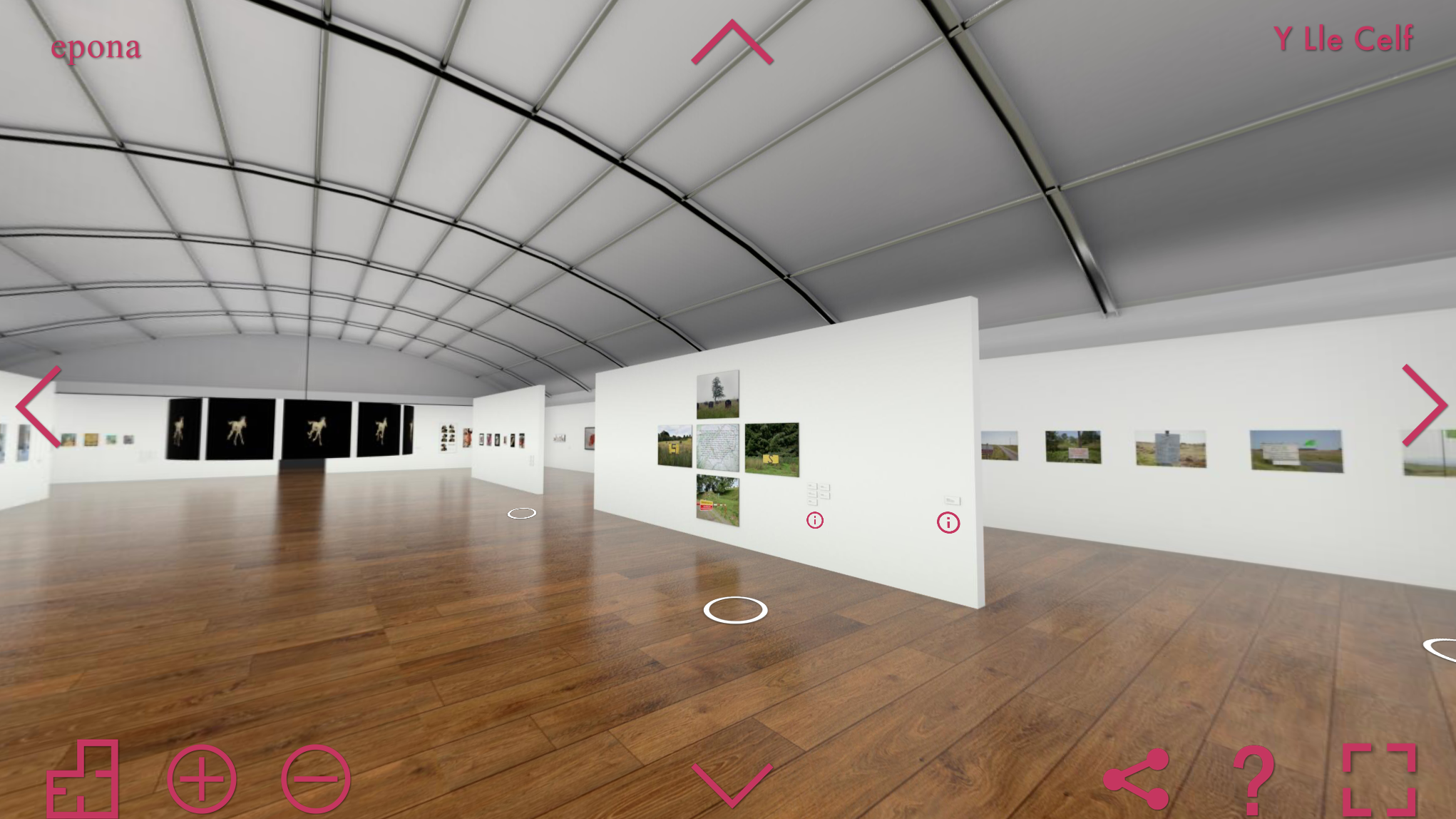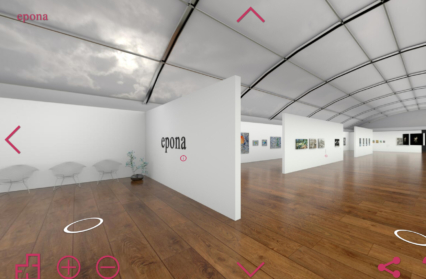Gary Raymond discusses the recent emphasis on “digital” projects in Welsh art, and looks at the recent innovative partnership between 4Pi Productions and the National Eisteddfod, bringing an exhibition, Epona, alive during lockdown.
For years now in Wales’s creative industries, “digital” has been little more than a buzzword, uttered by Welsh Government and passed down from Arts Council Wales to the frantic scribbling of funding applications from hungry artists. Most artists, you might argue, have not truly understood what the needs of a “digital” project have been. In fairness, the Arts Council has never really been able to offer up any concrete definitions. Welsh Government has been even more woolly. Everyone has just been sure that it has something to do with the future, and so long as “digital” was central to whatever creative projects were being encouraged, then relevance was sure to follow.
It was Ken Skates who pushed the word hardest when he was minister for arts and football and transport and weather and existential angst and a hundred and fifty other things. When I interviewed him in 2017 I asked him to expand on the “digital” shibboleth being offered to the arts in Wales. But there was nothing more specific to be said. This meant that a merry dance ensued where more often than not applicants for Arts Council money didn’t always truly know what “digital” meant, and ACW knew they knew, and we all knew they knew they knew. With such vague parameters, however, some interesting things were done. But often it simply meant a theatre company putting a video installation on a Welsh mountaintop, or a video installation in a Welsh warehouse, or a video installation on a Welsh beach. The exhilarating progressive lunges that have been going on in digital storytelling, in immersive artistic experiences, and in design, have gone largely unexplored in Wales – at least in so far as what has been produced for public consumption.

The one company in recent years that has stood out has been 4Pi. This is a company of creatives who come from a tech background, rather than a bunch of artists trying to figure out exactly what “digital” means to the funding bodies. 4Pi, on evidence of their previous creations, are focussed on the platform, the delivery, the ways in which art can be experienced differently. Their multimedia dome, which provided an immersive dance extravaganza from the comfort of your own recliner, was an engrossing and elating thing. Neither “art” nor “tech” felt latched on. The symbiosis was vital to its success, and 4Pi are building an international reputation for innovation. So, it’s ironic, is it not, that the cultural body in Wales most often affectionately ridiculed for its archaic (and arcane) parades of robes and medals has positioned itself as the most daring and innovative when the pandemic upturned all our plans. Yes, it is the National Eisteddfod, (once perceived to be fenced in not only by its peculiar ceremonies and its exclusive rules on language, but by an actual fence), that has opened up in these times of forced isolationism. In pairing with 4Pi to create a virtual exhibition, where anybody with internet access in the world can navigate their way around a digital gallery, the National Eisteddfod has blown the doors wide open on any discussions about accessibility.

And it’s a good exhibition, with its highs and lows, the bits that work and the bits that work less effectively. Epona, as the exhibition is titled, presents a rich array of work on the brief asking artists to communicate their hopes for the future. Perhaps not an inspired remit, but an important one, nevertheless. There are examples of older figures competing next to the natural buoyant energy of younger voices. And “competition” is the right word, notably more so than in an actual, as opposed to virtual, exhibition. One shortfall of the digital experience that only innovative strides could address, is how works, no longer hanging, relate to one another. Here they rarely relate at all, but rather each piece can only be judged on whether it has more or less impact than the previous click. In a real gallery, the white space is all important, as is the lighting, the atmosphere, and any curator worth his or her salt judges these things sensitively. But none of that is relevant in Epona. “Walk” amongst the works, click on the next to view, and just like browsing a website, the work expands. For some at Epona, it reveals a tantalising lack of tactility, as with Luned Rhys Parri’s 3D images. They have all the depth and energy sucked out of them. The works of Nerea Martinez de Lecea’s All the Pretty Horses, however, are afforded a brilliant opportunity to showcase their own rich clarity. But neither give the impression of authentic representation of what it’s like to be in a room with them. In film, Daniel Trivedy’s Testing the Lion feels facile, which I’m sure it wouldn’t do in the context of the real room. Sean Vickery’s German Village, on the other hand, feels like a vital piece of animation.
Artists such as Iwan Bala, Peter and Tim Davies, and Peter Finnemore, once the anti-establishment firebrands of Welsh art forever crying for everything to be torn down and rebuilt, here seem every bit the establishment artists in Epona. It strengthens the exhibition to have them there, gives a bit of ballast to a “room” that could do with a bit of anchoring at times. Any danger of drifting, it must be said, could very well be down to the limitations of the medium rather than the wayward responses of artists to a broad brief. Sean Harris’s installation (which pops out as a YouTube video) is here a little in the way, obscuring a space that is not always so easy to glide around, whereas one imagines in a real room it would have been a powerful centrepiece.
But this is an important step in Wales. I hope galleries will be encouraged to embrace such innovation and view it not as an undermining of the “real” experience but a potential arm to broaden engagement (and, importantly, open up new revenue streams).
You can see the exhibition Epona from 4Pi for a limited time on the National Eisteddfod website.
You might also like…
Gary Raymond suggests that the new open and inclusive National Eisteddfod could form the cultural hub for a new push for Welsh independence, but first it needs to be bold and clean out some room at the top.
Gary Raymond is editor at Wales Arts Review. His latest novel, The Golden Orphans is available now.



 Enjoyed this article? Support our writers directly by buying them a coffee and clicking this link.
Enjoyed this article? Support our writers directly by buying them a coffee and clicking this link.








